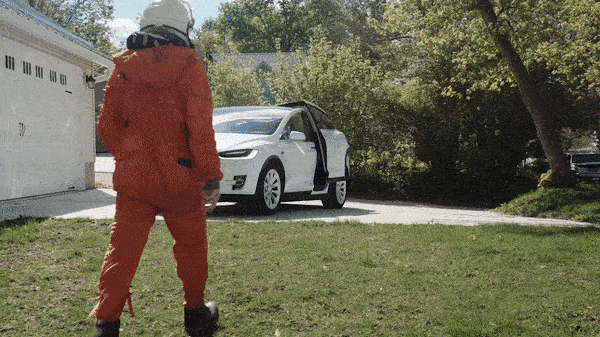Production for Tesla’s Model 3 is now underway, but you won’t see it humming down the road in a TV commercial anytime soon. That’s because Tesla has always relied on word-of-mouth and exclusivity to keep its electric vehicles in high demand.
Elon Musk’s brand of environmentally friendly, IoT-enabled vehicles makes headlines and starts conversations just fine on its own—but that doesn’t mean Tesla just sits back on its laurels. The company’s mission to reduce air pollution and reliance on fossil fuels has become a marketing campaign in itself from transportation to solar energy.
“Tesla’s mission is to accelerate the world’s transition to a sustainable energy future by creating products that are so compelling, there is no alternative,” the company writes on its official site.
While Tesla has often been admired for its “$0 marketing budget,” that’s not entirely true. According to the company’s annual report last year, Tesla spent $48 million on “marketing, promotional and advertising costs” in 2016. (Editor’s Note: AListDaily reached out to Tesla for an interview to discuss their marketing strategy, but the company declined.)
“Historically, we have been able to generate significant media coverage of our company and our vehicles, and we believe we will continue to do so,” Tesla stated in its report to the IRS. “To date, for vehicle sales, media coverage and word of mouth have been the primary drivers of our sales leads and have helped us achieve sales without traditional advertising and at relatively low marketing costs.”
They are also putting the fans to work. Consumers across the globe have been happy to create spec commercials over the years without prompting from Tesla, but this spring, they received extra motivation. At the suggestion of a fifth grader, Tesla held “Project Loveday,” a contest for the best fan-made commercial. Hundreds of entries were received, which the company narrowed down to 10 finalists. The winner, YouTuber Marques Brownlee, was crowned the winner and will be flown, with a guest, to a future Tesla unveiling event.
Marques Brownlee, “Project Loveday Contest Entry” https://t.co/DekNGEb8Fi
— Tesla (@TeslaMotors) July 26, 2017
Tesla taps its most valuable resource—its fans—to convince people to invest upward of $90,000 in a car. While print ads and TV commercials certainly reach their audience, referred customers are 18 percent less likely to churn, according to a study by Extole. These referrals are estimated to be 25 percent more profitable over their lifetime and between four-and-five times more likely to refer additional new customers. And refer, they do. Tesla’s popular referral program earned an impressive 40-times ROI in the fourth quarter of 2015 alone.
While Tesla does, in fact, spend money on its marketing, investing in its employees, standing for what they believe in and rewarding its fans have been much more profitable than traditional ads—and that’s still pretty cool.
As a member of the Presidential Advisory Forum, Musk is not afraid to speak out against social issues such as immigration bans and global warming—and that is a driver of sorts for brand lift and perception. A company’s position (in this case, Tesla or SpaceX through an extension of Musk) on social and political issues is a major driver for 57 percent of the world’s consumers, who will either buy or boycott a brand, according to an Edelman study.
S, 3, X on a bridge pic.twitter.com/2E57xqkTVY
— Tesla (@TeslaMotors) July 29, 2017

